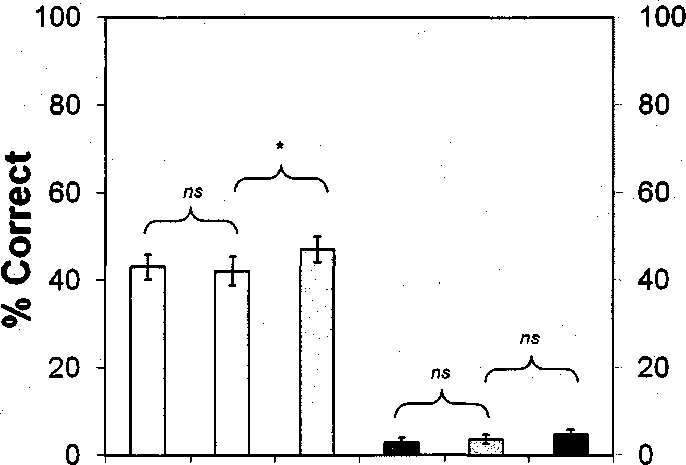99
was no cost associated with sounds delivered to the side opposite the cutaneous
stimulus. These results indicate that when an auditory stimulus was delivered to the
same side as the somatosensory stimulus, there was a significant enhancement for
spatially discriminating the side of the somatosensory stimulus with this simultaneous
irrelevant sound.



Figure 2. The data from Experiment 2 examining the spatial specificity of auditory influences on
touch perception. The left half of the figure shows the hit rates, whereas the right half of the figure
illustrates the false alarm rates. Error bars reflect ±1 standard error of the mean.

Since subjects reported on each trial whether they felt something on the left,
right, or on neither side, false alarms occurred when participants reported feeling
something that was not actually presented (i.e., erroneous reports of a somatosensory
percept on one hand when no somatosensory stimulus was delivered or when it was
More intriguing information
1. Optimal Vehicle Size, Haulage Length, and the Structure of Transport Costs2. Accurate, fast and stable denoising source separation algorithms
3. Whatever happened to competition in space agency procurement? The case of NASA
4. Ahorro y crecimiento: alguna evidencia para la economía argentina, 1970-2004
5. The name is absent
6. Fiscal Reform and Monetary Union in West Africa
7. The name is absent
8. Input-Output Analysis, Linear Programming and Modified Multipliers
9. Education and Development: The Issues and the Evidence
10. STIMULATING COOPERATION AMONG FARMERS IN A POST-SOCIALIST ECONOMY: LESSONS FROM A PUBLIC-PRIVATE MARKETING PARTNERSHIP IN POLAND